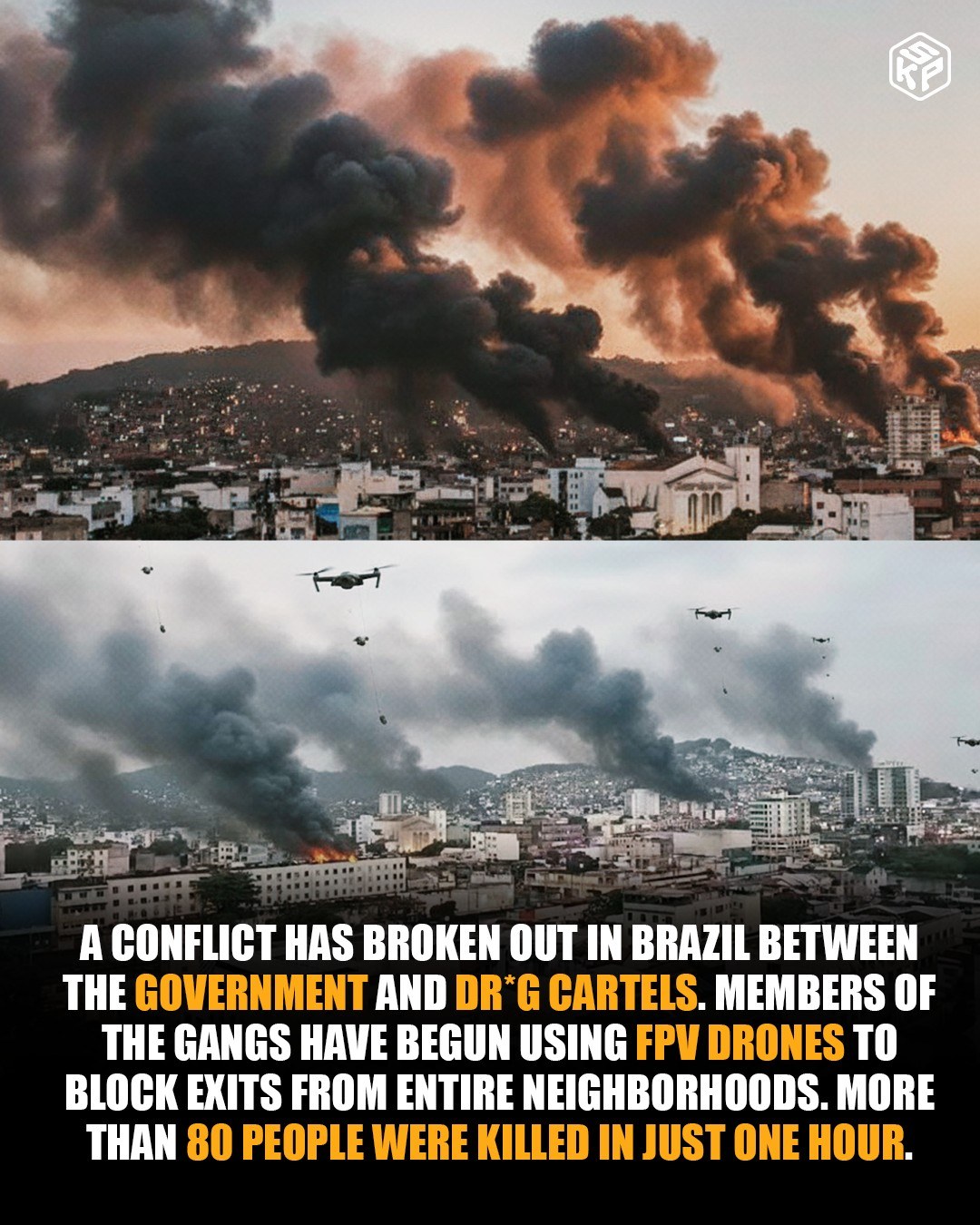As dawn broke on October 28 2025, Rio de Janeiro’s northern zone lay under a heavy cloud of tension. Security forces massed in the winding streets of the favelas, preparing what would become the most intense police operation in decades. The air bristled with anticipation and fear.
At around 4 a.m., more than 2,500 civil and military police launched into the heart of Complexo do Alemão and Penha, backed by helicopters, drones and armored vehicles. The target: the gang known as Comando Vermelho and its deep roots in these hill‑side communities.
The operation was swift, brutal and chaotic. Residents heard continuous gunfire, drones overhead, vehicles burning. Smoke curled above the favela ridges as the morning sunlight found bodies, debris and barricades.
Initial official reports cited at least 64 people killed, including four police officers; arrests numbered 81. But independent sources quickly raised the death toll to over 100—some say as high as 132. The discrepancy deepened outrage.
The state government described the raid as a victory in the war against “narco‑terrorism.” Governor Cláudio Castro called the gang’s arsenal “war‑grade” and defended the violence as necessary. Critics questioned the human cost.
Around the targeted neighborhoods, chaos erupted. Buses were hijacked and turned into barricades, roads blocked, schools locked down. Residents described feeling trapped inside war zones of their own city.
In one chilling scene, residents laid dozens of bodies in a public square, waiting for identification. Some wore camouflage or lacked equipment; their deaths raised serious questions about profiling and due process.
Human‑rights groups swiftly condemned the operation. The United Nations Office of the High Commissioner for Human Rights called it “horrifying,” calling for independent investigations into whether civilians were among those killed.
For the residents of the favelas, the day didn’t feel like law enforcement — it felt like a siege. Doors bolted, children fled to basements, families huddled in fear as the firefights echoed through their homes.
Some locals recalled hearing drones drop explosives, gunfire ringing for hours, armored vehicles moving through steep alleys. The terrain itself—a labyrinth of narrow stairs and steep slopes—gave the residents and gangs an advantage in this urban battle.
Schools across the zone shut down mid‑morning; the federal university cancelled classes. Education, transport and daily life unraveled as the city’s infrastructure buckled under the weight of conflict.
Arrest warrants served during the raid reportedly numbered in the hundreds. Yet while low‑level suspects were detained, questions lingered whether the leadership of the gang was truly disrupted—or simply buried for the moment.
Families of the deceased demanded answers. Many claimed loved ones were civilians, not combatants. Some bodies bore signs of execution, burn marks, or wounds inconsistent with cross‑fire. The spectre of summary killings haunts the aftermath.
In the wider political arena, the raid raised alarm ahead of major international events in Brazil. The timing added a global spotlight on Rio’s security strategy.
Meanwhile, the gang retaliated through the day. On buses, on blockades, on streets, they struck back—showing capacity, anger and control. The raid had not ended the threat, it may have escalated it.
Analysts warned that killing foot‑soldiers without tackling underlying structures breeds a cycle: someone else steps up, violence shifts, and the territory remains contested. Some called the operation a show of force, not strategy.
Amid the wreckage of the raid, there emerged stories of resilience. Activists documented the dead, neighbours shared food for displaced families, local faith leaders offered solace in shaky voice. Community held on despite the trauma.
The official weapons count was staggering: over 90 rifles seized, half a ton of drugs taken out of circulation. But for many, the weapons were less shocking than the sight of corpses on their streets.
The governor predicted this raid would shift the balance of power in Rio’s gang wars. Yet residents remained skeptical: they’d seen similar claims before without lasting change. For them, peace felt like a distant dream.
Churches and civic groups demanded accountability: detailed autopsies, transparent investigations, civilian oversight. Without truth, trust erodes. Tears mingled with anger in vigils across the favelas.
As dusk fell over the hills of Penha and Alemão, the smoke lingered. Buildings bore bullet holes, roads were scorched, and children stared at scenes they shouldn’t have seen. The day changed lives.
Rio’s skyline, once synonymous with beaches and sunsets, now included the memory of this raid. The cost of security measured in lives, not just headlines. Residents asked: who pays when the bullets stop?
The state called it success; the families called it massacre. The truth likely lies somewhere in between—but the voices of the forgotten must be heard. Change demands more than operations.
For the international community, this event rang alarm bells. Even as Brazil framed it as a crime‑fighting triumph, human‑rights observers warned the world: the fight against gangs cannot trample life.
On October 28, 2025, making headlines and history, Rio’s war‑front opened inside its own neighbourhoods. Whether this day marks the turning point or another chapter of violence depends not just on force—but on justice, healing and accountability.
